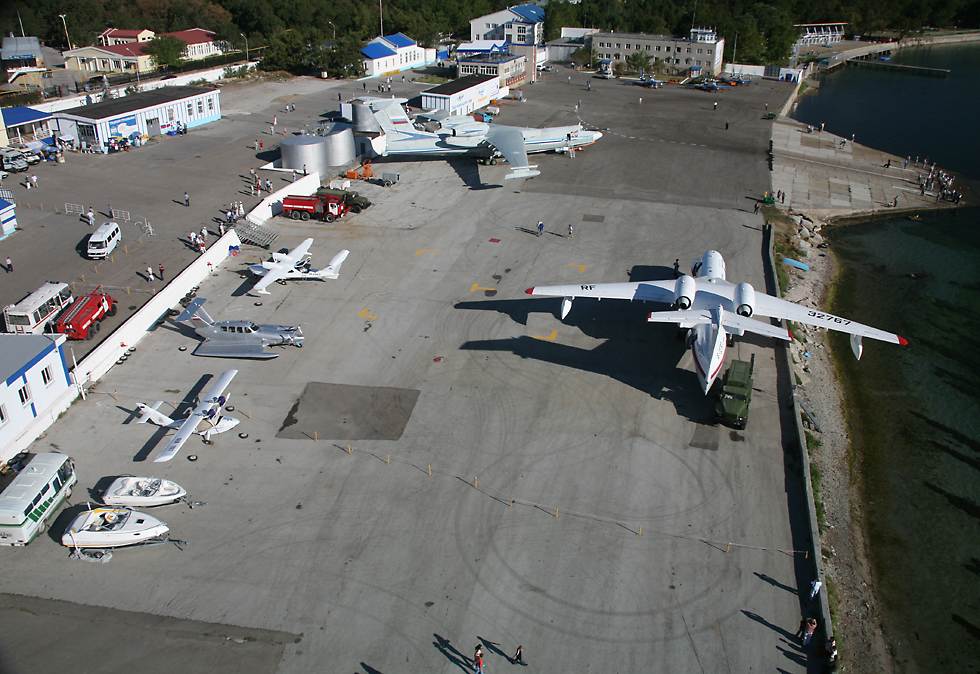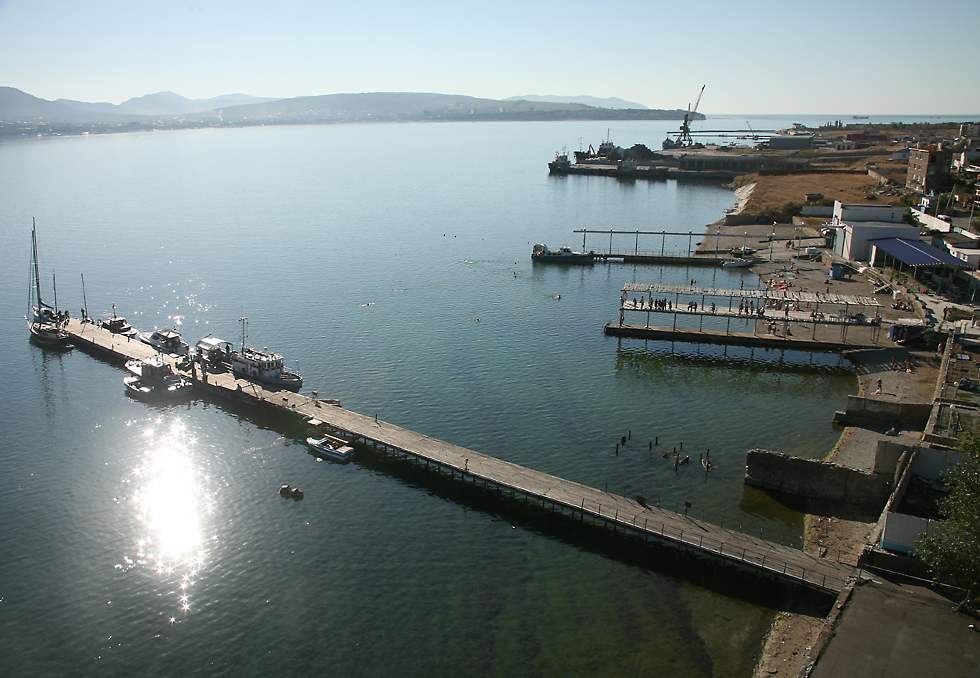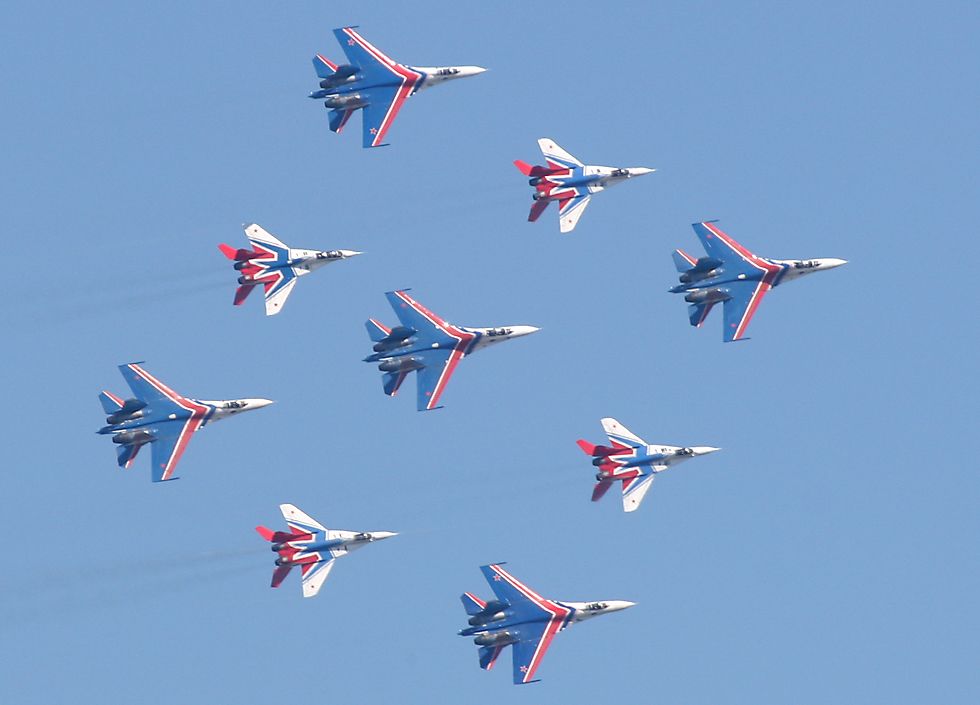Gidroaviasalon 2006

The annual Gidroaviasalon ("hydro-aviation exhibition") is held in the city of Gelendzhik on the Russian shore of the Black Sea. Just getting to Gelendzhik is something of an adventure, which might well involve connecting through Moscow on a Soviet era airliner like this Tupolev Tu-134. The Tu-134, whose NATO codename is "Crusty", entered service in 1967 and there are many still in service around the world, even though Russian and other airlines are rapidly converting to western aircraft. But while it's still around, it's a thrill for an aviation enthusiast to ride in an airliner which still has the glass navigator's nose of its bomber predecessors. Unfortunately you probably won't fly directly into Gelendzhik, but rather into Anapa, about 100 kilometers further up the coast. Connecting between Anapa and Gelendzhik can be an interesting challenge, especially if you arrive at night as I did. I ended up riding down in a beaten up old Lada with a chain-smoking couple who had showed entrepeneurial flair by turning themselves into a taxi service when they saw the dumb, rich tourist. However, it's hard to complain because although they did charge way over the official taxi rate, the ride still only cost me $US75, which isn't too bad considering we arrived at the hotel somewhere between one and two in the morning. |

I did shoot from the long pier for the first two days of the show, but then two large British tour groups turned up and it seems like the security detail became uncomfortable. Not only did they keep foreigners off the pier, they also kept us off the ramp, and they even stopped taxis from bringing me down the public road you can see in a previous photo, even though I waved my press card at them. I brought up the matter of The Men in Big Hats in the press center, Beriev's public relations manager was apologetic but clearly felt himself to be impotent, as if the police and the even more dreaded Strelzhi in black uniforms were completely beyond his control. There seemed to be quite a bit beyond Beriev's control, including the aircraft displaying at the show. Most of the aircraft on the show's exhibition list were no shows, including a Be-12 "Mail" seaplane, Tu-142 "Bear" and Il-38 "May" maritime patrol aircraft, as well as Ka-32, Ka-52, Mi-6 and Mi-14 helicopters. I'm not even sure that all of these aircraft are still in service anywhere. The detailed show scheduled handed out in the press center each morning, timed to the minute, also turned to vapor pretty much as soon as the flying began. Various other difficulties made life interesting for western visitors, some entirely forgiveable like a near total lack of English and high prices for food and accomodation, others less endearing such as harassment on the road by policemen hungry for a bribe, and an ongoing situation where my hotel repeatedly failed to get my papers stamped by the local police, resulting in me nearly missing my connection when I got back to Moscow, and having to bribe another policeman $US400 in full public view so that I could get out of the country! Foreigners who I met at the show said that the number of no-shows was normal for this event, and told me their own tales of woe with Russian officialdom. Travelling with a group instead of independently like myself was no guarantee of an easy life, either; one tour group had been told that they couldn't stay in the hotel they'd booked because it was being used by "Putin's bodyguard" (which turned out to be a concocted tale without substance), and a visit to a Russian airbase which had cost $6000 in "fees" had similarly come to nothing, and with no refund. |
|
Still, it's better to see these situations as part of the adventure, and the regular Russians I interacted with were friendly and tried hard to bridge the gaping communication gap. In the end I came here to see some extraordinary aircraft, and there were certainly many interesting highlights of the show, things that you won't see anyone else on the planet. |
 |




